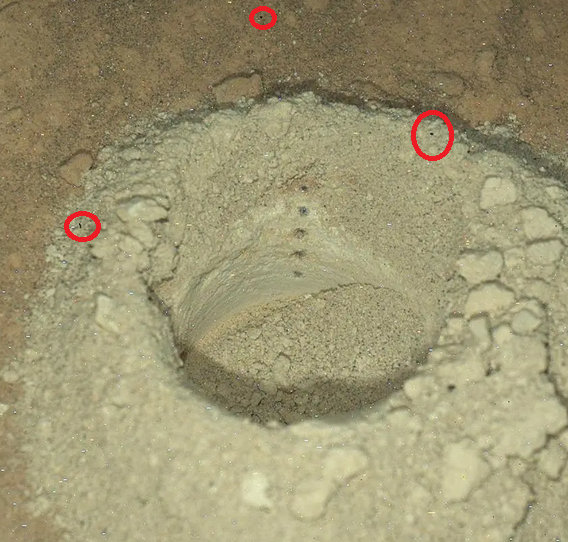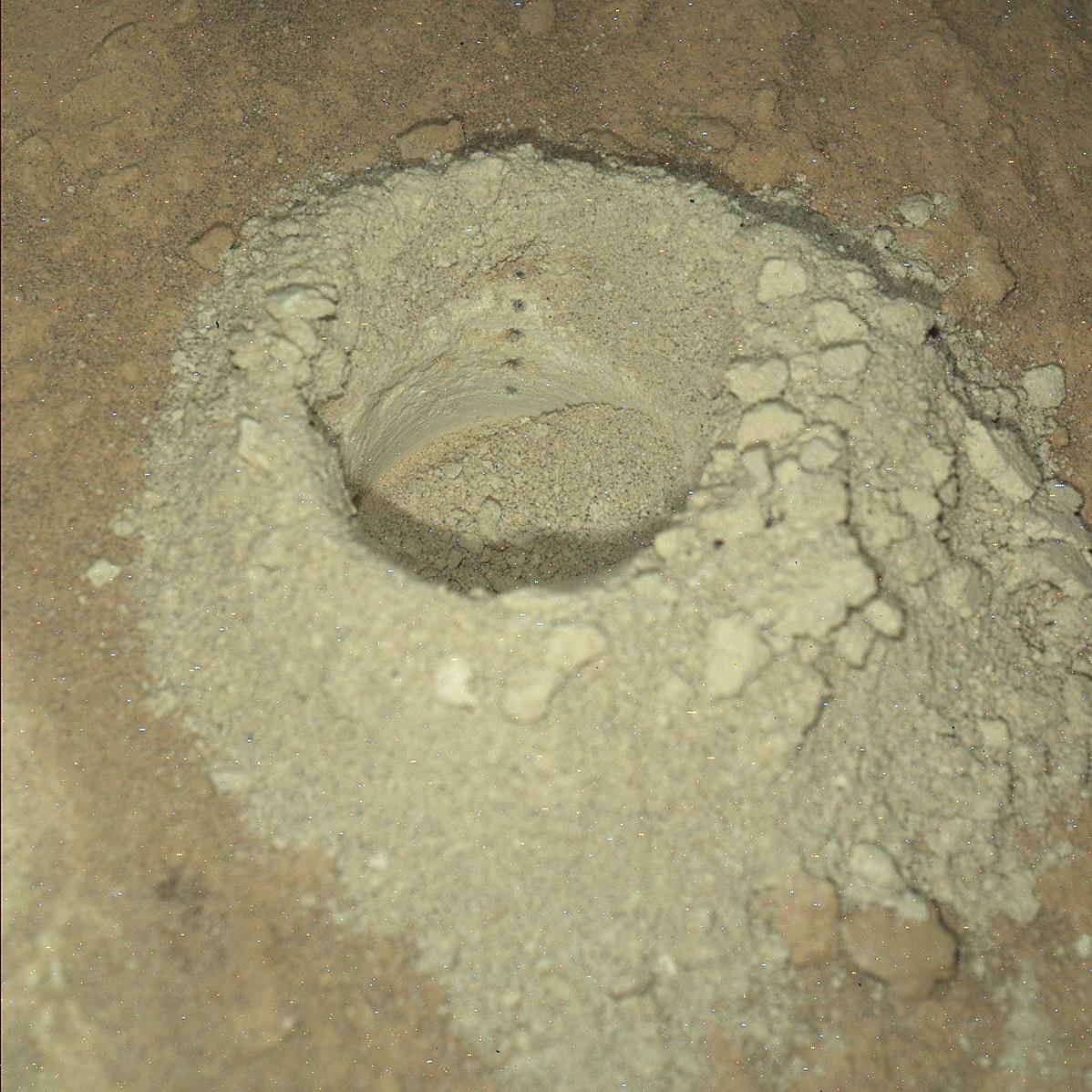What are those dark flakes, like the one at the upper right rim of the hole?
Those are small pits made by laser shots from the ChemCam instrument. Each strike of the laser causes a tiny flash of light, that light is picked up by a telescope inside ChemCam and sent to three spectrographic analysers inside the rover. The data from the analysis can instantly record the chemistry of the rock (or sand) identifying its constituent elements and the percentages of each element present. The laser has been fired well over a million times at targets in Gale crater.
I think you're referring to the five vertical spots running up the center of the far side of the hole, but I'm curious what these little dark flakes are:

OK, now I understand. They could be noise caused the lengthy night time exposure, or some dark inclusions in the host rock that was drilled. I'll check to see if they appear in any other images, if so that will rule out noise, but if they are liberated inclusions from the rocks substrate, then we'll likely never know what they are if the team decide not to investigate them.
NASA's Curiosity Mars Rover
A lemmy community for scientific discussion of the Curiosity Rover and Mars Science Laboratory.
